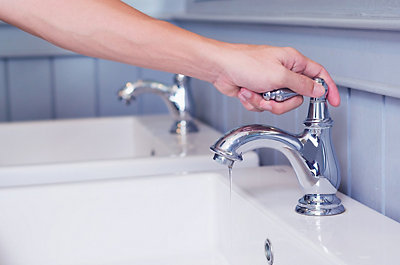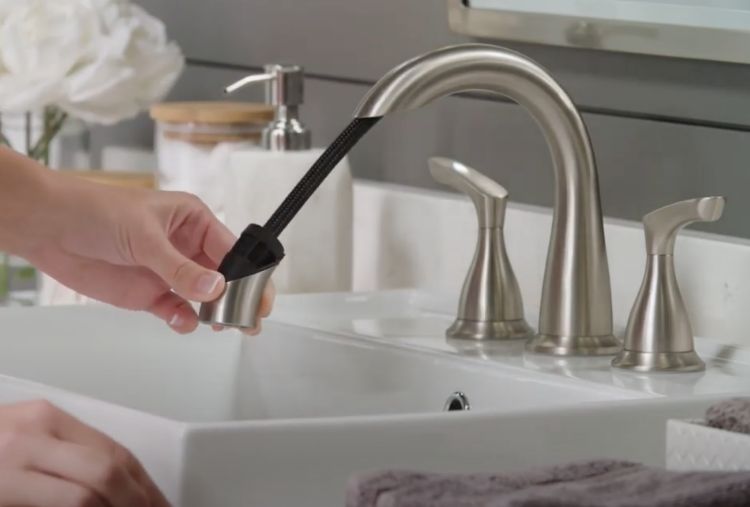Causes Why It's Critical to Resolve a Faulty Faucet
ArticleAre you in search of facts about What Causes Leaky Faucets & How To Fix Them?

Leaking faucets may feel like a minor trouble, yet their impact exceeds simply the annoyance of the noise. From drainage to sustaining unneeded financial expenses and wellness risks, disregarding a leaking tap can cause numerous effects. In this article, we'll delve into why it's essential to address this common home problem immediately and successfully.
Waste of Water
Ecological Effect
Dripping faucets add dramatically to water wastefulness. According to the Epa (EPA), a single faucet trickling at one drip per secondly can throw away more than 3,000 gallons of water per year. This not just stress water resources yet likewise affects ecosystems and wild animals dependent on them.
Financial Prices
Boosted Water Costs
Beyond the ecological effect, leaking faucets can blow up water costs considerably. The built up wastefulness gradually converts into greater energy expenses, which can have been avoided with prompt repairs.
Prospective Residential Or Commercial Property Damages
Moreover, prolonged leaking can bring about harm to fixtures and surface areas surrounding the faucet. Water build-up can trigger discoloration, deterioration, and also architectural concerns if left unattended, resulting in additional repair work expenses.
Health and wellness Worries
Mold and Mildew Development
The consistent visibility of dampness from a trickling tap produces a suitable atmosphere for mold and mildew growth. These fungi not only endanger interior air high quality but also posture health and wellness dangers, particularly for people with breathing conditions or allergic reactions.
Waterborne Illness
Stagnant water in leaking taps can end up being a breeding ground for microorganisms and other pathogens, boosting the risk of waterborne conditions. Contaminants such as Legionella microorganisms flourish in stationary water, potentially causing serious health problems when ingested or breathed in.
DIY vs. Expert Fixing
Advantages and disadvantages of Do It Yourself Repair Work
While some might try to fix a dripping faucet themselves, do it yourself fixings come with their own collection of challenges. Without proper understanding and devices, do it yourself efforts can intensify the problem or cause incomplete repair services, lengthening the trouble.
Advantages of Working With a Specialist Plumber
Working with a specialist plumber makes certain that the underlying source of the trickling tap is addressed efficiently. Plumbing professionals possess the proficiency and tools to diagnose and fix tap issues efficiently, saving time and minimizing the risk of further damage.
Step-by-Step Guide to Fixing a Dripping Tap
Tools Called for
Before attempting to take care of a dripping faucet, collect the needed tools, consisting of an adjustable wrench, screwdrivers, substitute components (such as washers or cartridges), and plumber's tape.
Typical Faucet Issues and Their Solutions
Determine the type of tap and the specific problem triggering the drip. Usual issues consist of worn-out washers, rusty valve seats, or malfunctioning O-rings. Describe manufacturer directions or on-line tutorials for step-by-step support on repair work.
Safety nets
Normal Upkeep Tips
To prevent dripping faucets, execute routine upkeep such as cleaning aerators, checking for leaks, and replacing damaged parts without delay. Furthermore, take into consideration installing water-saving gadgets or updating to more effective components.
Relevance of Prompt Repairs
Attending to trickling taps as soon as they're discovered protects against further water wastage and prospective damage, inevitably conserving both water and money in the future.
Effect On Residential Property Value
Perception of Well-Maintained Building
Preserving a home in good condition, consisting of attending to maintenance concerns like dripping taps, boosts its viewed worth and desirability among possible buyers or occupants.
Impact on Resale Value
Features with well-maintained plumbing components, including faucets, command higher resale worths in the realty market. Addressing trickling faucets can add to a positive impression throughout property inspections and arrangements.
Environmental Duty
Specific Contribution to Conservation
Taking duty for fixing leaking taps straightens with more comprehensive efforts toward water conservation and environmental sustainability. Every person's activities collectively make a considerable influence on maintaining priceless sources.
Lasting Living Practices
By focusing on punctual fixings and taking on water-saving behaviors, people add to lasting living methods that benefit both existing and future generations.
Final thought
Dealing with a dripping tap surpasses simple benefit; it's an important step towards saving water, reducing economic expenses, and protecting wellness and residential property. Whether through DIY fixings or professional help, doing something about it to fix leaking taps is a tiny yet impactful way to promote accountable stewardship of sources and add to a much healthier, more sustainable future.
Why Are My Faucets Dripping (And Can I Fix it Myself)?
Causes of a Dripping or Leaking Faucet
Whether you’re hearing drops of water falling and hitting a sink, or noticing water ooze out from the base of the spout, you shouldn’t ignore a dripping or leaking faucet. And, the good news is, sometimes you can fix the problem yourself.
In this article, we’ll review a few common causes of dripping and leaky. We’ll also walk you through some basic ways to find the problem and handle it without calling anyone — and let you know when to call in a pro.
But, no matter what the cause, or whether you can handle it on your own, the sooner you address it, the better.
Each drip may be a tiny amount of water. But, they all add up quickly. According to the U.S. Geological Survey, one faucet losing one drop every 20 seconds — five a minute — wastes around a liter of water every day, and 173 gallons a year.
Add in more than one in your house, and it’s a lot of water to waste. So, we’ll help you get to the bottom of things quickly.
Four Reasons Your Faucet May Be Dripping
Aerator is Damaged or Unseated Valve Seat is Corroded O Ring is Loose or Worn Out Part of the Assembly is Loose Aerator is Damaged or Unseated
If you unscrew the end of your faucet, you’ll find the aerator. It’s the little stem piece with a screen on it that shuts off the water circulation.
If it’s damaged, or if it’s not sitting right, it will allow water to pass through.
Valve Seat is Corroded
Next is the valve seat, which is connected to the washer. If the washer wasn’t in place correctly, then it could have ground against the seat. Over time, this damages the valve seat.
The problem could also be corrosion: Over time, the part has worn out, and it’s now allowing water to pass through.
O Ring is Loose or Worn Out
Since the o ring is only a small rubber gasket, it’s a common reason why the faucet is dripping. You’ll find it at the base of the faucet, and it’s there to keep water from coming out where it’s not supposed to.
However, it’s common for the o ring to wear out over time. When it does, you’ll notice a drip.
Part of the Assembly is Loose
So far, we’ve looked at a few small, specific parts. But, the problem could be anywhere in the assembly if something’s out of place.
Even if a part isn’t damaged, over time, it may have become loose or dislodged. It could be the parts we mentioned, or the aerator at the tip of the faucet, the stem itself,
Can I Fix a Leaky Faucet Myself?
Depending on the problem, and how handy you are, there’s a chance you can fix a leaky faucet without calling a professional. But, you do run the risk of making the problem worse.
If it’s a small drip, you can certainly try a few troubleshooting tactics. We’ll walk you through them in a moment.
But, no matter what, your first step should be shutting off the water coming into the faucet. You should find a shutoff valve under the sink on the pipes leading to it. Turn each one clockwise until they close tightly.
Next, make sure you have the right tools for whatever you’re attempting. It’s tempting to make do with what you have. But, you need the right ones for a reason: You’re often dealing with small parts that can break if you handle them carelessly.
If you’re feeling confident, here are some places to start.
Items Near the Tip of the Faucet
A few of the parts we mentioned — particularly the valve seat and washer — are located at the tip of the faucet where the water comes out. They’re easy to access, making it a good place to start.
Check the O Ring
To check the o ring, you’ll need to take off the spout at the base. It’s easiest on kitchen sinks with long spouts, versus the smaller, bulkier base on most bathroom sinks.
Either way, this can be tricky, so do it carefully and don’t force anything. If it’s not coming right off, you’re much better off calling in a pro than possibly breaking something.
For a kitchen sink, there’s usually a nut or coupling assembly at the base of the spout. These often slide off easily without using any tools.
Once you’ve disassembled those parts, gently but forcefully twist off the spout.
Then, you can see the o rings. There should be two of the rubber gaskets on the base. If they look worn or damaged, replace them, and see if that solves the problem.

Do you really like reading up on What Causes Leaky Faucets & How To Fix Them? Leave feedback down the page. We'd be pleased to see your opinion about this article. We are looking forward to see you back again later on. Sharing is nice. Helping people is fun. I love reading our article about How to Fix a Dripping or Leaky Faucet .